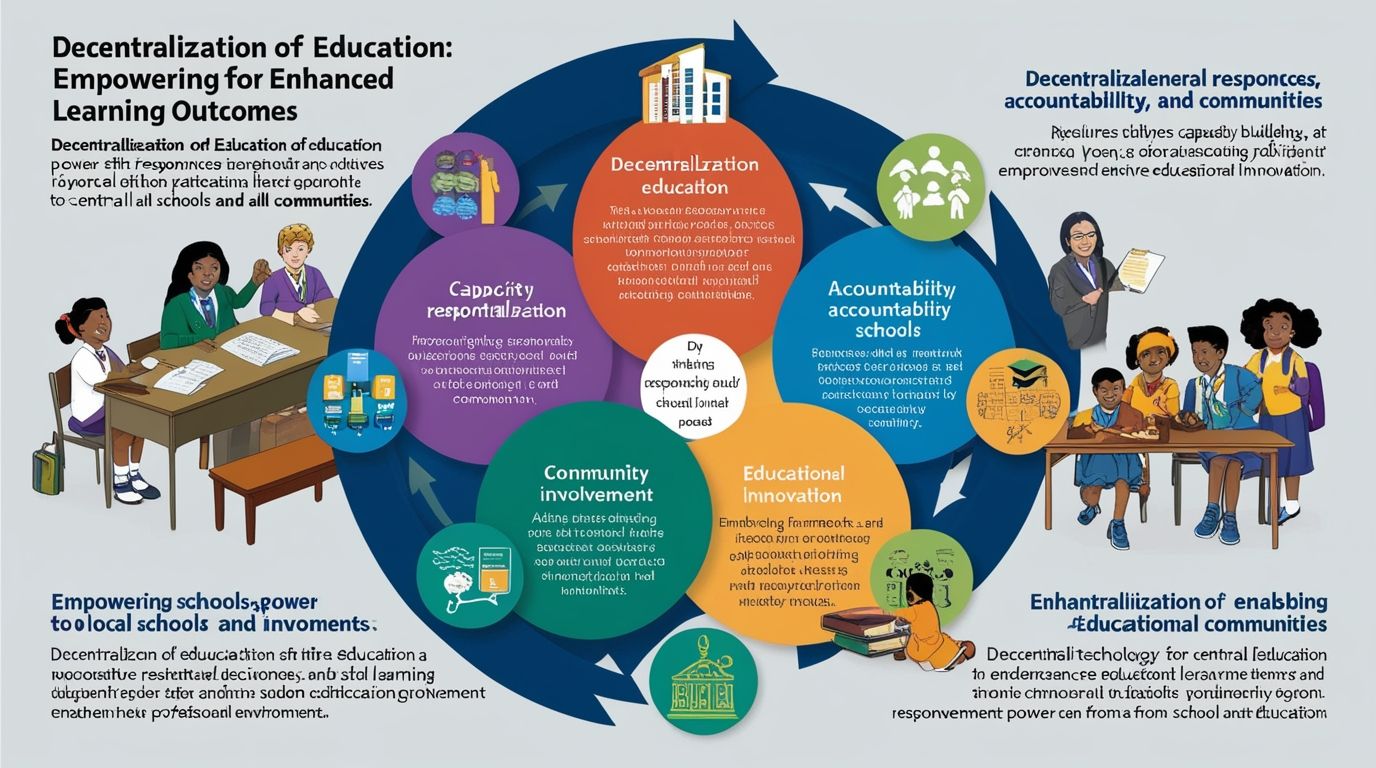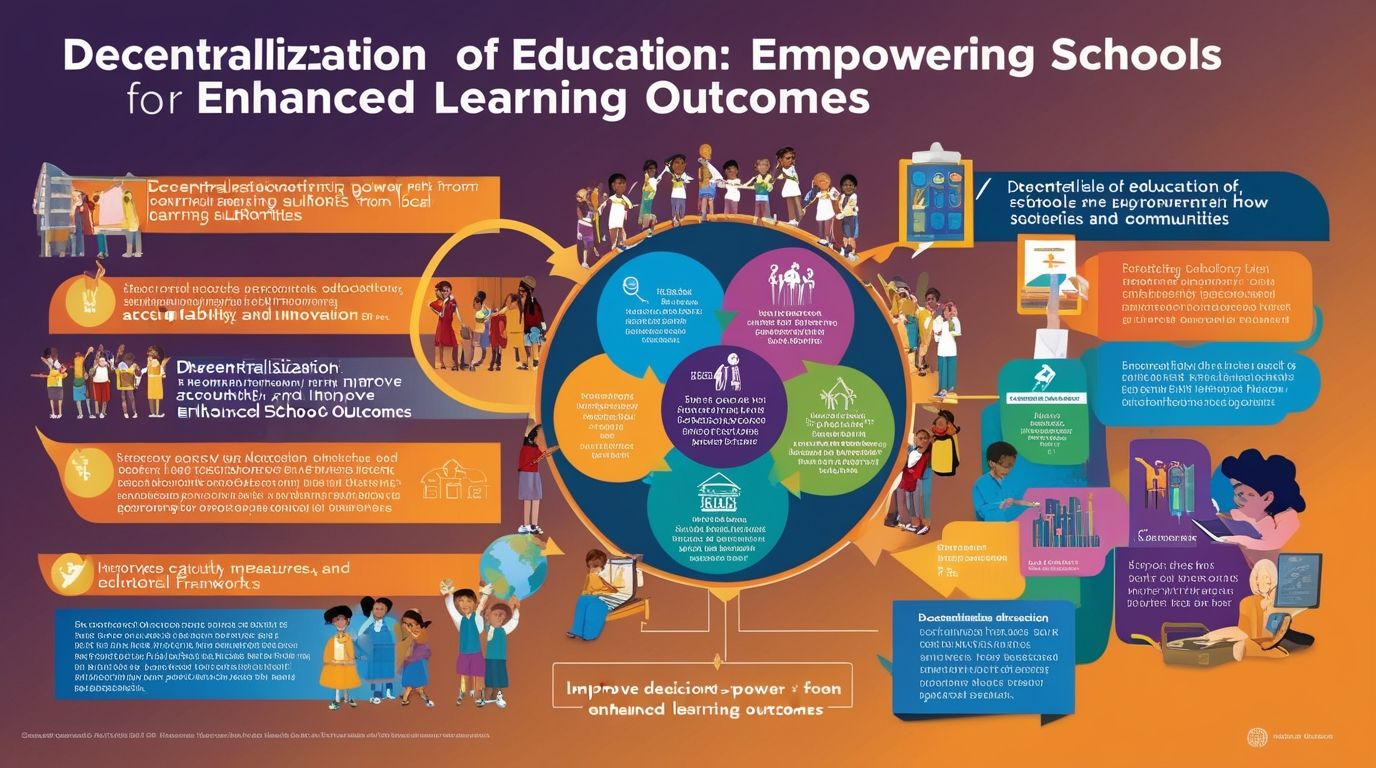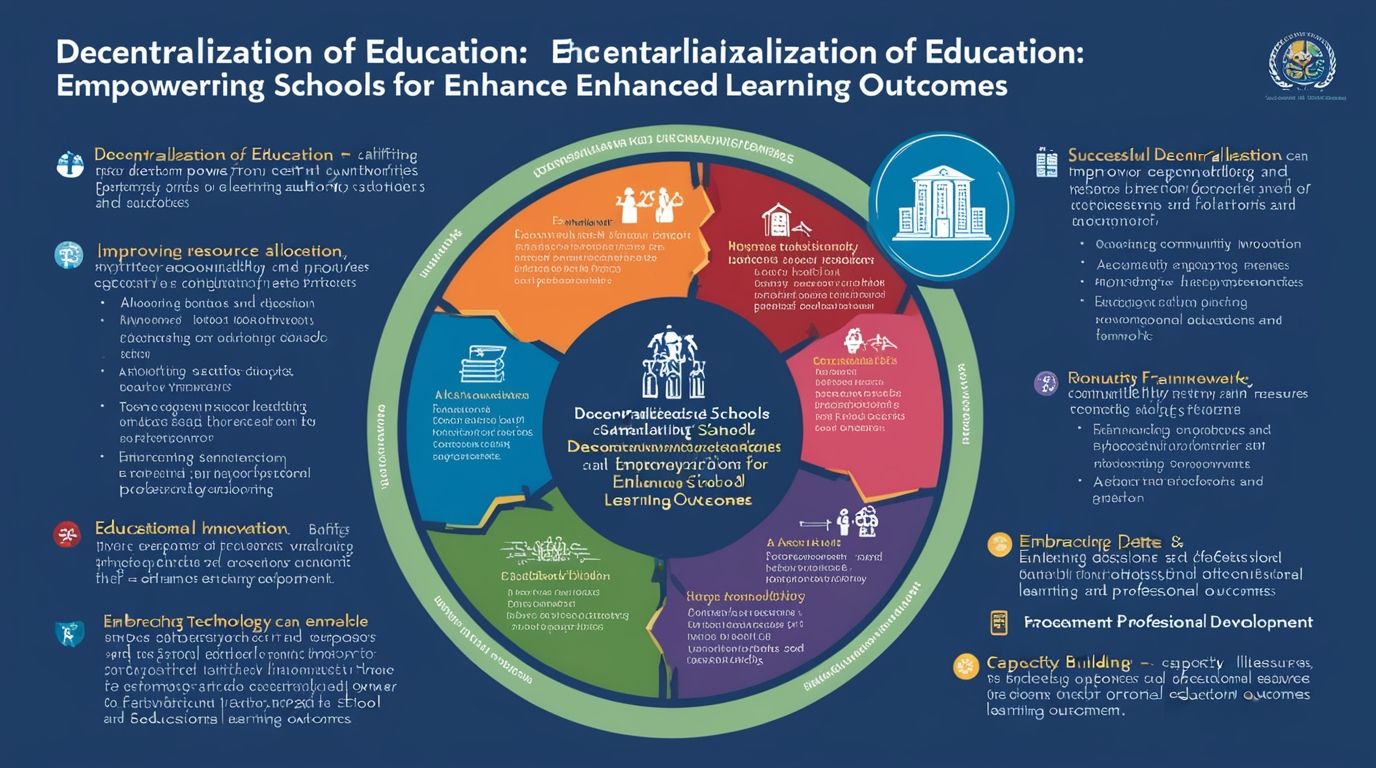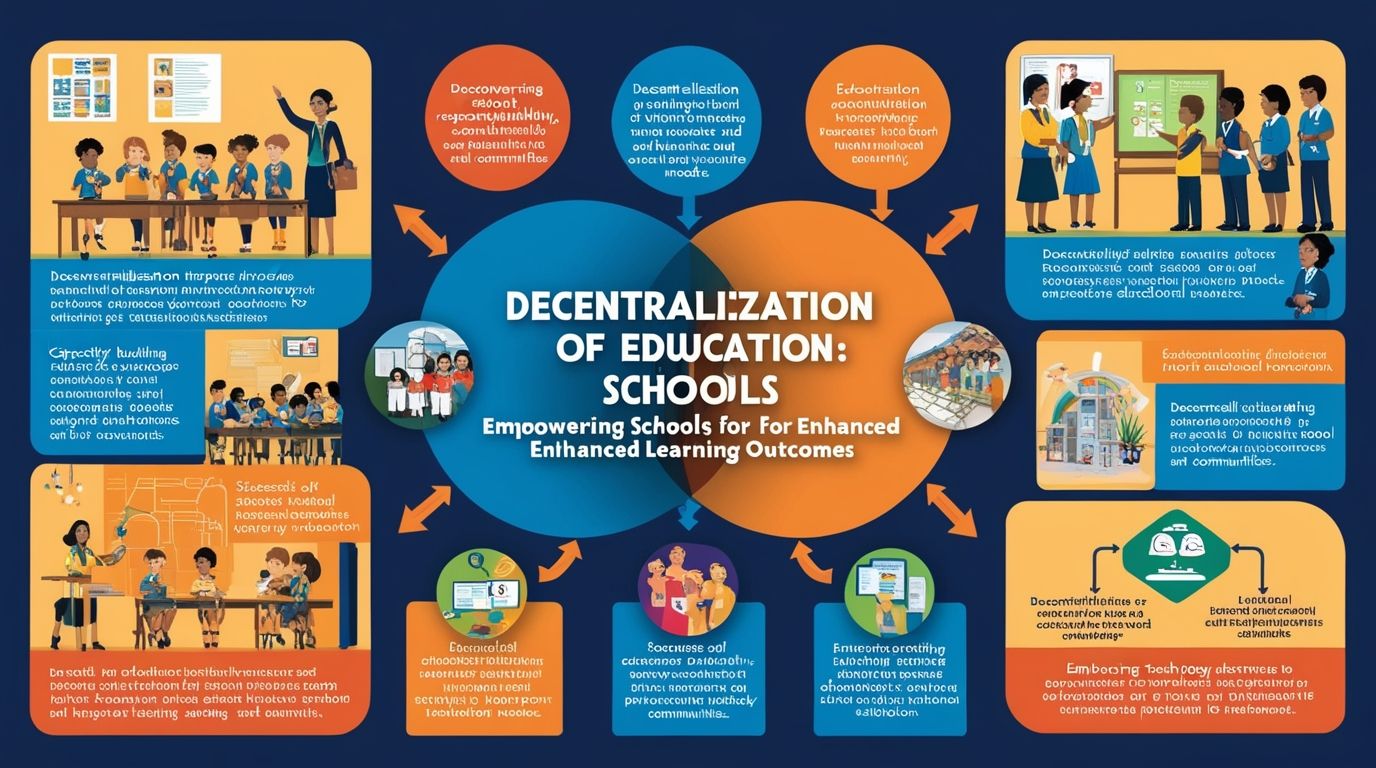Decentralization of Education: Empowering Schools for Enhanced Learning Outcomes
Decentralization of Education, a cornerstone of societal progress, has evolved significantly over the centuries. One of the most pivotal shifts in recent decades is the move towards decentralization. This process involves transferring decision-making powers from central authorities to local entities, such as schools and communities. Decentralization of education aims to empower schools, enhance educational outcomes, and foster a more responsive and inclusive educational environment.
The Rationale for Decentralization
Centralized educational systems often face challenges such as bureaucratic inefficiencies, limited local relevance. And slower responsiveness to the unique needs of diverse communities. In contrast, decentralization promises several benefits:
- Enhanced Responsiveness: Local schools and communities can identify and address specific educational needs more swiftly and effectively than distant central authorities.
- Increased Accountability: When schools have more control over their operations, they are directly accountable to their communities, which can drive improvements in performance and transparency.
- Improved Resource Allocation: Decentralized systems allow for better tailoring of resources to meet local demands, leading to more efficient and effective use of funds and materials.
- Promotion of Innovation: Schools with greater autonomy can experiment with new teaching methods, curricula, and management practices, fostering a culture of innovation.

Models of Decentralization
Decentralization can take various forms, each with different levels of autonomy and responsibility granted to local entities. The primary models include:
- Administrative Decentralization: This involves transferring administrative functions, such as staffing, budgeting, and procurement, from central authorities to local schools or districts.
- Fiscal Decentralization: Local entities gain control over financial resources, enabling them to allocate funds according to local priorities and needs.
- Political Decentralization: Local stakeholders, including parents, teachers, and community members, are given a voice in decision-making processes, often through school boards or councils.
- Pedagogical Decentralization: Schools are empowered to develop and implement their own curricula and teaching methods, allowing for more contextual and relevant educational experiences.
Case Studies of Decentralized Education Systems
Several countries have implemented decentralized education systems with varying degrees of success. Here are a few notable examples:
- Finland: Known for its highly successful education system, Finland operates a decentralized model where schools have significant autonomy in curriculum design and teaching methods. This flexibility has led to innovative pedagogical approaches and consistently high student performance.
- Canada: Education in Canada is primarily a provincial responsibility, leading to diverse approaches across the country. Provinces like Ontario and Alberta have implemented decentralized models, allowing schools to tailor their programs to local needs and priorities.
- Indonesia: In the early 2000s, Indonesia undertook a major decentralization reform, transferring significant authority to local governments and schools. While the transition faced challenges, it has led to increased community involvement and efforts to improve educational quality at the local level.

Challenges of Decentralization
Despite its potential benefits, decentralization is not without challenges. These can include:
- Capacity Issues: Local entities may lack the necessary expertise and resources to effectively manage education systems, leading to disparities in educational quality.
- Equity Concerns: Decentralization can exacerbate inequalities if wealthier areas are able to allocate more resources to their schools, leaving disadvantaged communities behind.
- Coordination Problems: Ensuring consistency and coherence across decentralized systems can be challenging, particularly in maintaining national standards and assessments.
- Political Resistance: Shifting power from central authorities to local entities can face resistance from those accustomed to centralized control.
Strategies for Successful Decentralization
Furthermore, To overcome these challenges and ensure successful decentralization, several strategies can be employed:
- Capacity Building: Investing in training and support for local administrators, teachers, and community members is crucial for effective management and governance.
- Equity Measures: Implementing policies to ensure equitable distribution of resources and support to disadvantaged areas can help mitigate the risks of inequality.
- Strong Frameworks: Establishing clear guidelines and frameworks for decentralization can help maintain consistency and coherence across the education system.
- Stakeholder Engagement: Involving all stakeholders, including parents, teachers, students, and community leaders, in decision-making processes fosters a sense of ownership and accountability.

The Role of Technology in Decentralization
Technology can play a significant role in facilitating the decentralization of education. Digital tools and platforms can support local decision-making, enhance communication, and provide access to a wealth of educational resources. For instance:
- Data-Driven Decision Making: Schools can leverage data analytics to monitor student performance, identify areas for improvement, and make informed decisions.
- Online Training and Professional Development: E-learning platforms can provide teachers and administrators with ongoing professional development opportunities, helping them build the necessary skills for effective local governance.
- Collaboration and Networking: Digital platforms can facilitate collaboration and knowledge sharing among schools. Educators, and communities, promoting best practices and innovation.
Conclusion
The decentralization of education holds the promise of empowering schools, enhancing educational outcomes, and creating more responsive and inclusive learning environments. While challenges exist, with careful planning, capacity building, and stakeholder engagement, decentralized systems can lead to significant improvements in educational quality and equity. As technology continues to advance, it will further support the decentralization process, enabling schools to better serve their communities and meet the diverse needs of their students.
Finally, decentralization represents a powerful tool for change. By shifting control closer to the communities and schools that directly impact students’ lives. We can foster a more dynamic, innovative, and equitable educational landscape, paving the way for future generations to thrive.

k5ynou
qlfofd
d56w2b
I’m not that much of a internet reader to be honest but your sites really nice, keep it up! I’ll go ahead and bookmark your website to come back down the road. Many thanks
82xm71
c31mvm
Este site é realmente fantástico. Sempre que consigo acessar eu encontro coisas boas Você também vai querer acessar o nosso site e descobrir mais detalhes! Conteúdo exclusivo. Venha saber mais agora! 🙂
Great write-up, I?¦m regular visitor of one?¦s website, maintain up the excellent operate, and It’s going to be a regular visitor for a long time.
Thanks for sharing excellent informations. Your site is so cool. I’m impressed by the details that you¦ve on this web site. It reveals how nicely you perceive this subject. Bookmarked this web page, will come back for extra articles. You, my pal, ROCK! I found just the information I already searched all over the place and just couldn’t come across. What a perfect web site.
Have you ever considered creating an ebook or guest authoring on other sites? I have a blog based on the same ideas you discuss and would love to have you share some stories/information. I know my readers would enjoy your work. If you’re even remotely interested, feel free to send me an e-mail.
I don’t normally comment but I gotta tell thanks for the post on this great one : D.
Some truly interesting information, well written and loosely user friendly.
I want studying and I think this website got some truly useful stuff on it! .
I love your blog.. very nice colors & theme. Did you create this website yourself? Plz reply back as I’m looking to create my own blog and would like to know wheere u got this from. thanks
As a Newbie, I am continuously exploring online for articles that can be of assistance to me. Thank you
Hiya! I know this is kinda off topic but I’d figured I’d ask. Would you be interested in exchanging links or maybe guest authoring a blog post or vice-versa? My site goes over a lot of the same topics as yours and I believe we could greatly benefit from each other. If you’re interested feel free to shoot me an email. I look forward to hearing from you! Superb blog by the way!